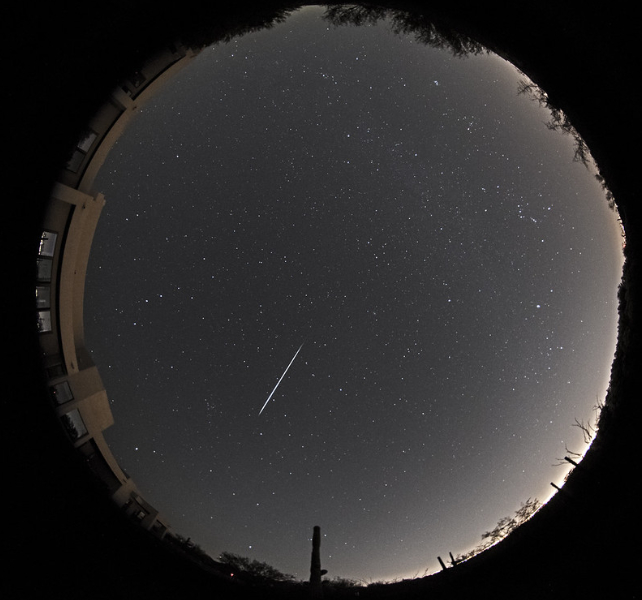
One of the best meteor showers of 2024 closes out the year this coming weekend.
If skies are clear, watch for the Geminid meteors, peaking on the night of Friday into Saturday, December 13-14th.
The Geminids in 2024
To be sure, the Geminids have a few strikes against them this year. Not only is it cold outside, but the Moon is near full, 98 percent illuminated waxing gibbous at the shower’s max.
But don’t despair: the shower hits its maximum at 3:00 Universal Time (UT) on December 14th (10:00 PM EST on the 13th) with a max Zenithal Hourly Rate of 120 meteors per hour.
This means the shower will favor western Europe and North America, a plus. The radiant in Gemini near the bright star Castor (Alpha Geminorum) also means that the shower starts to be active in the late evening before local midnight.
The source of the Geminids is none other than the prolific ‘rock-comet’ 3200 Phaethon. Clearly, something intriguing is going on with this object. On a short 1.4 year orbit, 3200 Phaethon seems to blur the line between asteroid and semi-dormant comet nucleus. Japan wants to send its DESTINY+ mission to 3200 Phaethon in 2028 to get a closer look.
The Geminids have put on a show since 1862, though they seem to have really taken off in recent decades, surpassing the August Perseids as the best annual meteor shower of the year.
Fighting the Moon
The key to seeing any meteor shower at its best is to find dark skies and a clear, unobstructed horizon.
The December Moon sits just a constellation away in Taurus at the shower’s peak… but keep in mind, the shower is also active on the evenings prior to and after the 14th. I plan to select my observing site with this in mind, and block the Moon behind a hill or tree. Early morning predawn observing will put the Moon lower to the horizon.

There’s a reason the Moon is currently so high in the sky: not only is the Moon near the December Solstice and occupying the slot that the Sun will hold in June, but we’re headed towards a once every 18.6-year Major Lunar Standstill of the Moon in 2025.
Observing and contributing to meteor shower science is as easy as watching, recording what you’re seeing at a designated interval, and reporting that count to the International Meteor Organization (IMO). Keep in mind, several other meteor showers are still active in mid-December, including the November Taurid fireballs and the Ursids, peaking on December 22nd.

For imaging, I like to simply automate the process, and set a wide-field DSLR camera running on a tripod with an intervalometer to take timed exposure shots and see what turns up later in post processing. Aim the camera off to one side of the radiant by about 45 to 90 degrees to catch the Geminid meteors in profile.
Don’t miss the 2024 Geminids, as a fine way to round out sky-watching in 2024.
This article was originally published by Universe Today. Read the original article.








